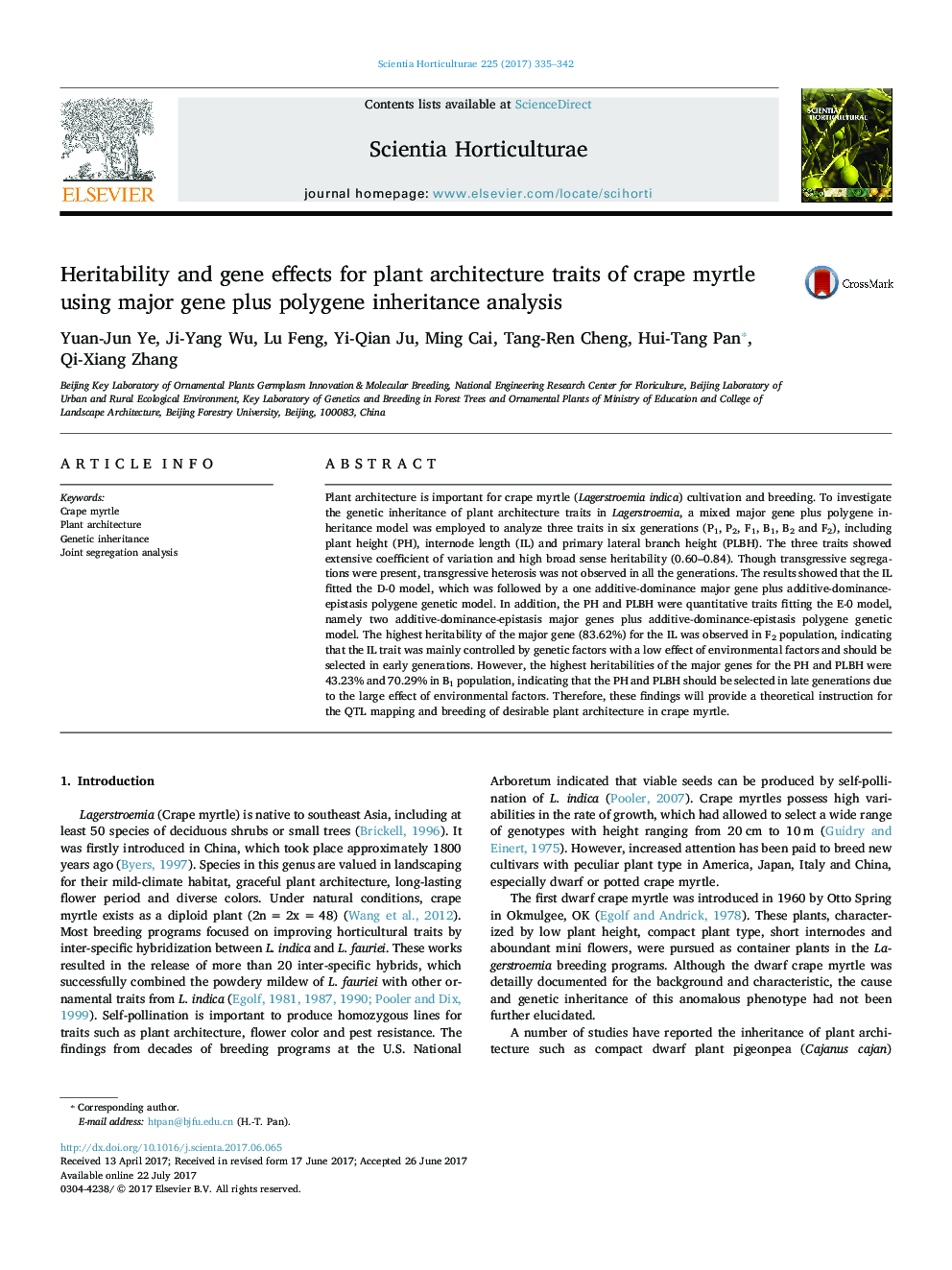| Article ID | Journal | Published Year | Pages | File Type |
|---|---|---|---|---|
| 5769274 | Scientia Horticulturae | 2017 | 8 Pages |
â¢A mixed major gene plus polygene inheritance model is proposed to analyze the genetic inheritance of plant architecture.â¢The studied traits show extensive coefficient of variation and high broad sense heritability.â¢The internode length trait is mainly controlled by genetic factors and should be selected in early generations.â¢The plant height and primary lateral branch height traits should be selected in late generations due to the large effect of environmental factors.
Plant architecture is important for crape myrtle (Lagerstroemia indica) cultivation and breeding. To investigate the genetic inheritance of plant architecture traits in Lagerstroemia, a mixed major gene plus polygene inheritance model was employed to analyze three traits in six generations (P1, P2, F1, B1, B2 and F2), including plant height (PH), internode length (IL) and primary lateral branch height (PLBH). The three traits showed extensive coefficient of variation and high broad sense heritability (0.60-0.84). Though transgressive segregations were present, transgressive heterosis was not observed in all the generations. The results showed that the IL fitted the D-0 model, which was followed by a one additive-dominance major gene plus additive-dominance-epistasis polygene genetic model. In addition, the PH and PLBH were quantitative traits fitting the E-0 model, namely two additive-dominance-epistasis major genes plus additive-dominance-epistasis polygene genetic model. The highest heritability of the major gene (83.62%) for the IL was observed in F2 population, indicating that the IL trait was mainly controlled by genetic factors with a low effect of environmental factors and should be selected in early generations. However, the highest heritabilities of the major genes for the PH and PLBH were 43.23% and 70.29% in B1 population, indicating that the PH and PLBH should be selected in late generations due to the large effect of environmental factors. Therefore, these findings will provide a theoretical instruction for the QTL mapping and breeding of desirable plant architecture in crape myrtle.
